Today, on Live Simply, The Podcast, I’m sharing exactly what real food is, and also what it is not. I’m also sharing exactly what a real food lifestyle looks like.
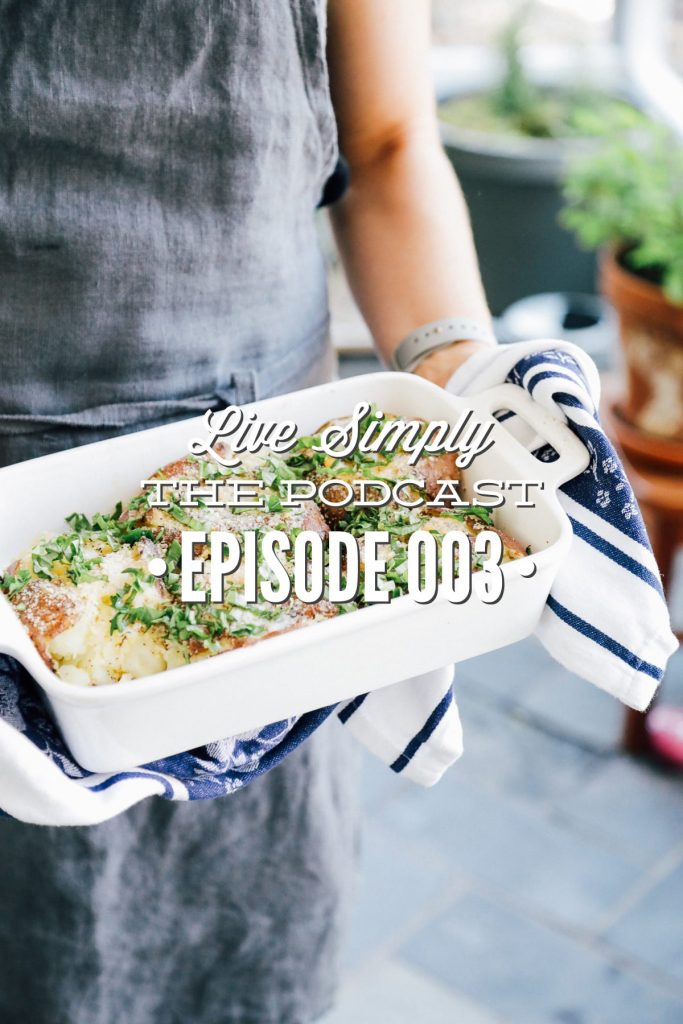
Want to Save This Article?
Enter your email & I’ll send it straight to your inbox. And you’ll get new recipes & tips each week.
Listen Here
You can listen to the podcast episodes here on the blog, iTunes, Stitcher, or Google Play.
Leave a Review
Reviews are critically important for a new podcast. Reviews tell iTunes that people are listening and also helps new people find the podcast. To leave a review, click on the button above and then click “Write a Review” (you’ll have to scroll down to see this option). Also, while you’re over in iTunes, be sure to hit the subscribe button to be notified when new episodes launch.
Show Notes
- Michael Pollan, Food Rules
- Real Food Fats 101
- Real Food Sweeteners 101
- Environmental Working Group
- Printable Chart (available in the free Real Food Crash Course)
- How to make your own yogurt
- Subscribe to Live Simply
What’s Wrong With Food Today?
First, let’s consider what exactly food is. I think the best place to turn is the dictionary. Food: Something that nourishes, sustains, or supplies, used in the body of an organism to sustain growth, repair, and vital processes and to furnish energy.
In his book, Food Rules, Michael Pollan offers us a few facts to consider when thinking about the food we put in our bodies. The first fact concerns the Western diet. The Western diet, also referred to as a Standard American Diet (SAD), usually consists of a lot of processed food, processed meat, lots of added sugars and added fats which are found in processed food, along with refined grains (white flour, etc).
He writes that societies that have adopted such a way of eating “invariably suffer from high rates of the so-called Western diseases: obesity, type 2 diabetes, cardiovascular disease, and cancer. Virtually all of the obesity and type 2 diabetes, 80 percent of the cardiovascular disease, and more than a third of all cancers can be linked to this diet. Four of the top ten killers in America are chronic diseases linked to this diet.”
In fact two, presented in the book, he writes “Populations eating a remarkably wide range of traditional diets generally don’t suffer from these chronic diseases. Traditional diets run the gamut from ones very high in fat (the Inuit in Greenland are an example which subsists largely on seal blubber) to ones high in carbohydrate (example: Central Indians have a diet largely made up of maize and beans) to the ones high in protein (the Masai tribe in Africa live off cattle blood, meat, and milk.)”.
Pollan points out that these are extreme examples. But these serve a point. This new western diet, a diet that’s made up mostly today of highly processed food is making us sick.
Real food makes you feel good. At least that’s been my experience, my families experience, and the experience of so many other people–from the guests I talk to on the podcast to readers who write me and share their journey. This isn’t to say that we won’t get sick even when consuming real food. We don’t live in a perfect world, and illness happens. But real food supports our bodies, it nourishes our bodies and supports our hormones and growth. Real food contains vital nutrients, like vitamins and minerals, that our bodies need to support it and keep it going and functioning in a healthy way. Processed food doesn’t offer us this. It leaves us undernourished, and lacking the basic nutrients we need to thrive.
I know that some folks argue that we live longer today than traditional cultures but I would point out, as Pollan does in his book, that this is due to improved infant mortality rates, as well as improved modern hygiene advancements.
What Real Food Is Not…
1. Real food is not a trend or fad.
While we may be hearing more about real food due to the internet, books, and documentaries, real food isn’t new. It’s not a trend that will be popular for a few years and then replaced with a new fad. Real food has always been around, since the dawn of time. It’s the way generations before us ate, and the way of eating that future generations will hopefully return to. Overly-processed food, which lacks nutrients and is made with manipulated ingredients, hasn’t always been around. If anything, processed food is the new kid on the block.
Now, there are certainly trendy real foods. Kale has been having a spotlight moment, along with chia seeds, cassava, almonds, and cauliflower (cauliflower pizza). While blogs may be making these particular foods trendy, they are simply real ingredients that have been around for ages.
2. Real food is not a restrictive diet, or even a diet at all.
A real food lifestyle is not about limiting food. It’s about saying yes to actual food (ingredients) versus something that’s trying to look and act like food. And here’s the thing, once you begin eating real food, your palate changes and you realize just how amazing real food tastes and how good you feel.
3. Real food is not about depriving yourself.
As Harry Blazer, a food and beverage trends researcher says, “Eat anything you want, just cook it yourself.” Processed food has made it easy for us to effortlessly grab chips, cookies, muffins, and other foods that should require spending a fair amount of time in the kitchen to make. Making food yourself means you’re probably not consuming cookies at every meal–it lends us to eat more variety.
There is a rise in real food companies who are making convenient options that are made with real ingredients. This is a blessing and curse. I believe the majority of our diet should come from home-cooked foods, made with simple ingredients. These real food convenience options are amazing and can be sprinkled in to help us simplify and reduce overall cook and prep times, when needed. But we shouldn’t exchange processed food for more boxes and packages, just because we can. Real food is about taking responsibility for our food, and learning how to prepare food so we can nourish our bodies with simple ingredients.
4. Real food is not about counting calories or eliminating naturally-occurring fats.
Calories naturally occur in food, along with fat. We need calories and fats to thrive. Since we’re eating a lot of variety when consuming real food, we don’t have to worry about consuming too much.
5. Real food is not keto, paleo, gluten-free, dairy-free, or vegetarian.
There are variations of a real food lifestyle. Sometimes certain foods need to be avoided due to healing a leaky gut, a food allergy or intolerance, the way you personally feel after consuming an ingredient, or a lack of a source for something like dairy, or another reason. But real food isn’t a labeled diet. Real food is the foundation on which these modified lifestyle choices come from.
6. Real food is not an elitist lifestyle. Real food is for everyone, not just people who make a certain amount of money or can shop at a certain store, or have a certain size kitchen. Real food can be found in just about every store if you know what to look for, and can work for any budget. It’s easy for people to get the idea that real food is an elitist and expensive lifestyle. That in order to enjoy good, nourishing you have to buy fancy ingredients: special powder options, collagen, quinoa, “superfoods”, and speciality nut milks. That’s simply not true. Real food is about getting back to the to the basics–simple, nourishing ingredients.
What Real Food Is…
1. Real food is traditional.
Real food is about food that has withstood traditions. Food which previous generations ate and enjoyed in their unprocessed state. In the past, people didn’t rely on big companies to tell them what to eat, or how much to eat. As Pollan says, “Don’t eat anything your great grandmother wouldn’t recognize as food.” Looking at traditional societies, we know that historically, we are omnivores, eating both meat and plants. We’ll talk about the specifics of consuming plants and animals in a few minutes.
2. Real food is intuitive.
Our ancestors ate when they were hungry, and stopped when they were full. Food that isn’t full of additives, but rather is full of beneficial nourishment that our bodies recognize, allows us to eat intuitively. There isn’t anything added to real food–like added fat (there is naturally-occurring fat that fills us up) or sugars that are altered from their original state by food scientists in a lab– to make us addicted to the taste of the food or tricks our body into think that we’re still hungry.
Real food also allows us to become in-tune with how our bodies react to food. You may notice that you don’t feel good after eating a particular food, like dairy or gluten or a particular vegetable. Eating real food teaches us to listen to our bodies versus marketing.
3. Real food is ingredients.
Ingredients that are as close to their natural state as possible. Jamie Oliver says, “Real food doesn’t have ingredients, real food is ingredients.” Oats, almonds (almond flour), yogurt, cheese, meat are all ingredients, used to create meals or at times enjoyed on their own.
4. Real food is full of variety and tastes amazing and different.
5. Real food is seasonal.
6. Real food has a face and name.
Real food is grown by someone, raised by someone, cared for by someone. Food is not just a substance. Real food has a story.
7. Real food is nourishment and should make you feel good.
What Does Real Food Look Like?
While everyone defines “real” in various ways–there are variations of real food, like paleo, vegetarians, pescetarians, dairy-free, gluten-free due to personal beliefs, allergies, or maybe an intolerance–here’s the foundation of what real food looks like…
- Grass Fed, Pastured Meats: Animals that have been raised and fed as they were intended when created, with grass underneath and the sun overhead. We use all parts of the animal, including the bones for nourishing stock. Chicken, beef, lamb, pork, and wild game.
- Eggs: From chickens that have been raised on pasture, roaming free with lots of sunlight.
- Fats: Such as: butter from grass-fed cows, coconut oil, ghee, extra virgin olive oil, avocado oil, tallow, and lard.
- Grains, Nuts, and Seeds: Whole grains and minimally-processed with an emphasis on ancient grains and variety: spelt, kamut, einkorn, even whole wheat. Also, ancient practices, such as: sourdough and sprouting grains, if possible. Also: beans, nuts, and seeds.
- Fruits and Veggies: Preferably in season and grown as local as possible, using organic practices. Including lots of fresh herbs. While organic produce is encouraged, I don’t always buy organic produce. I use the EWG list when shopping at the store. And if purchasing from a local farm or market, many farms aren’t “certified organic” but use organic practices.
- Dairy: Raw or pasteurized and full fat from grass-fed cows, or goats or sheep. Anytime you see the words low-fat or fat-free you know a lot of junk has been added to compensate for the loss of nourishing fat. This includes: milk, cheese, cream cheese, sour cream, yogurt, kefir (a fermented milk-based drink), cottage cheese.
- Salt: Real, unrefined salt that hasn’t been stripped of its nourishing minerals.
- Seafood: Raised in the wild versus a fish farm.
- Sweeteners: As close to the natural state as possible, such as: raw honey, pure maple syrup, and minimally-processed sugars.
- Beverages: Water, and beverages that come from basic ingredients: teas, coffee, kombucha (a fermented tea), milk (from nuts, seeds, or dairy). Even wine and beer and cocktails–just watch the ingredients and stick with crafting your own cocktails using simple liquors and fresh ingredients.
To grab a handy printable chart of what real food looks like (pictured above), along with a downloadable and printable crash course to get started with a real food lifestyle, go to livesimply.me/subscribe.

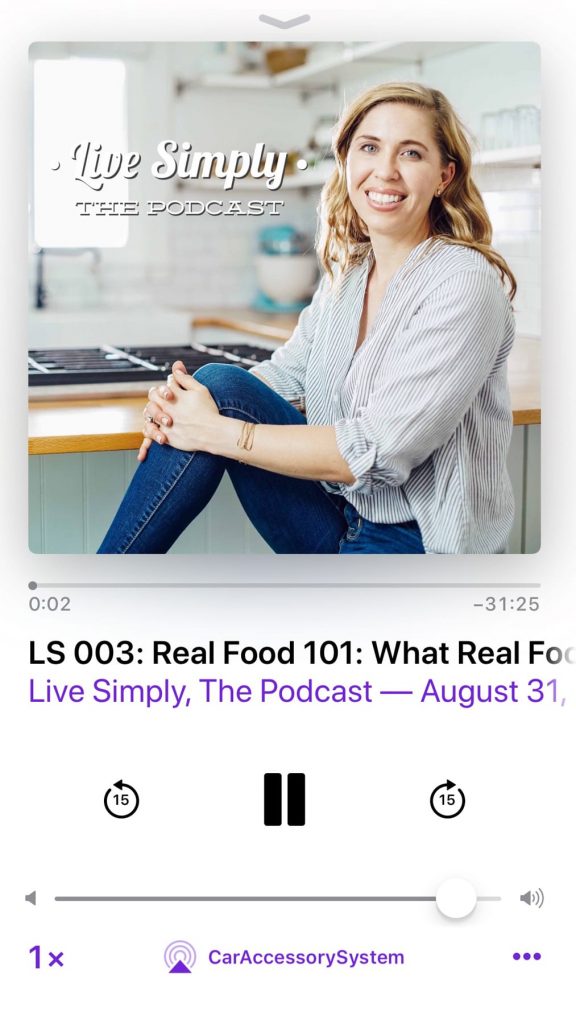
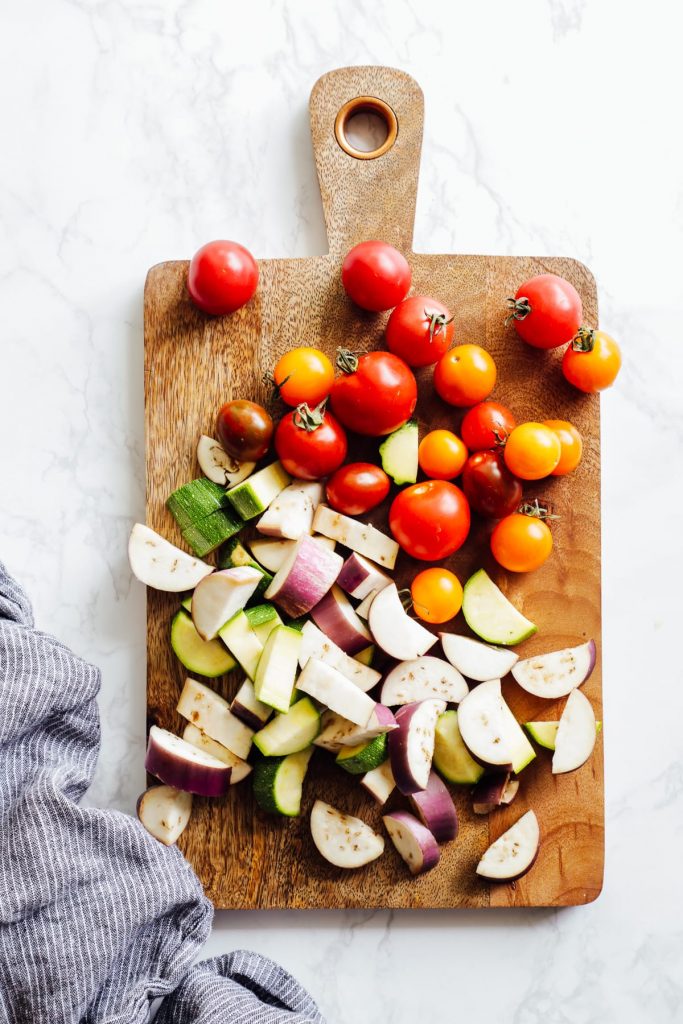
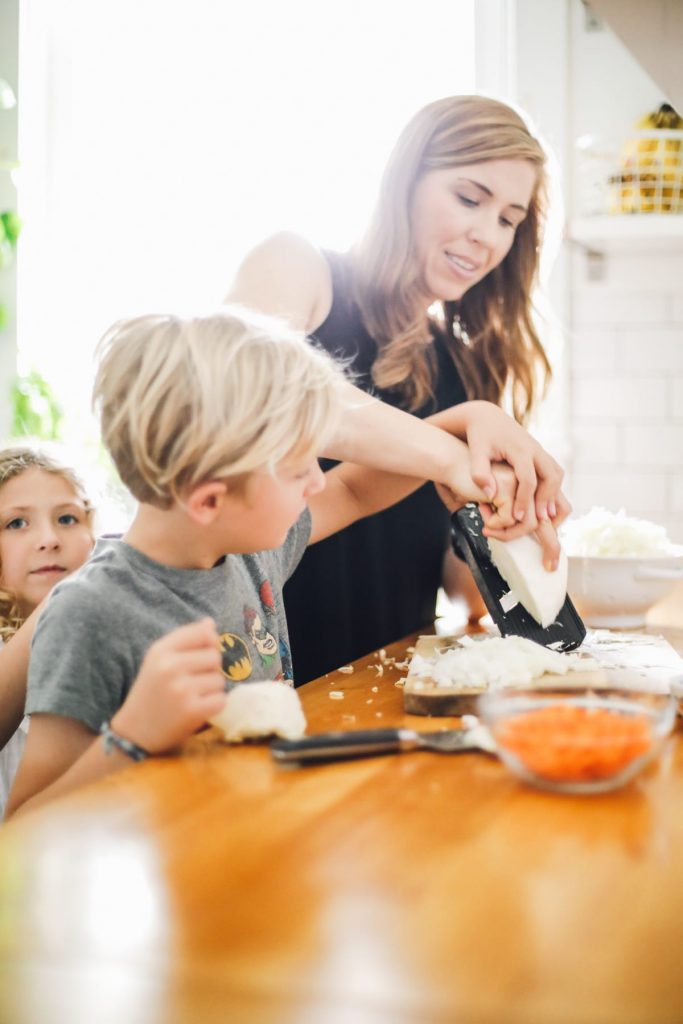
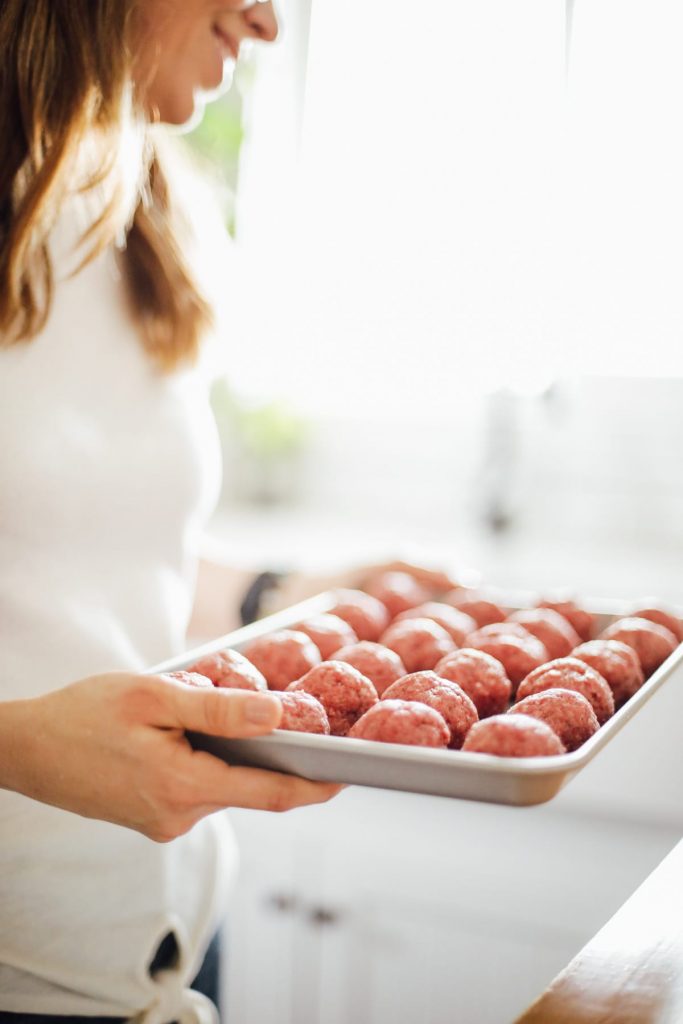
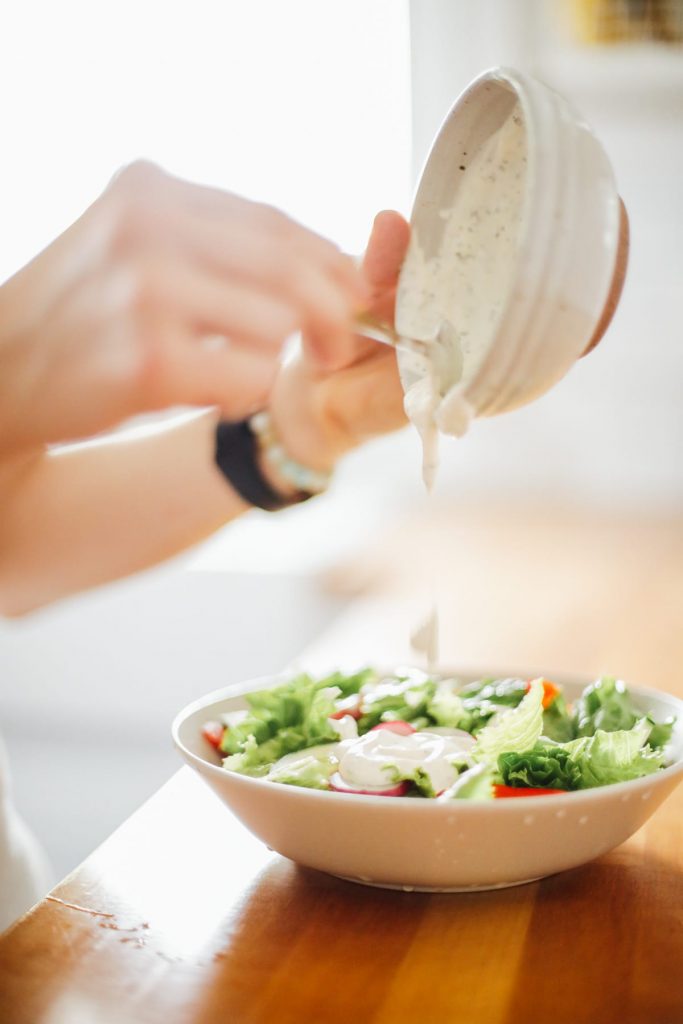
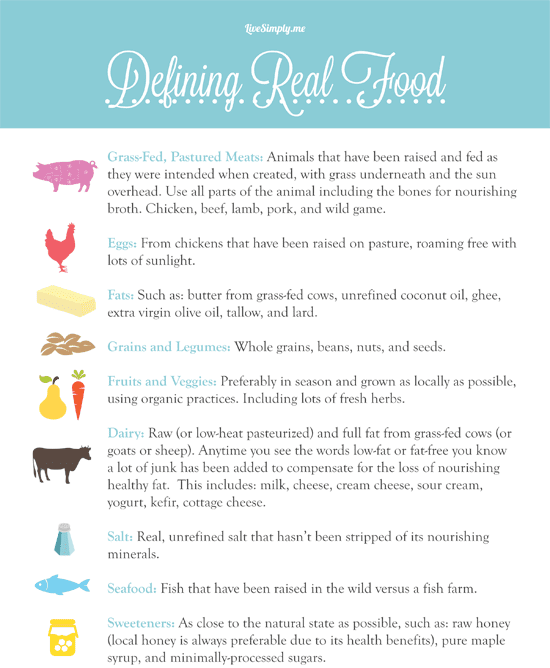
I binged listened to the first 3 podcasts today, and I’m LOVIN’ it!!! YAY!! So glad you’re doing these, and I love listening to them as I’m getting ready, doing chores, etc. Such awesome information!
Thank you!!
I’m so glad you’re enjoying the podcasts, Allyson!
Love the blog and the podcast! I’m learning a lot and making baby steps toward healthy changes in my cooking and baking. Thanks!!
Thank you so much, Belinda! I’m so glad you’re enjoying the podcast.
Hi Kristen,
I love your podcasts ! Thank you for sharing your journey with us. I have been following your blog for a wee while now and these are the perfect addition.
I was lucky enough to have been brought up in a real-food house. My parents have a garden and my mum is an amazing cook. I’m French and French people are very proud of their food. I have always preferred meals cooked from scratch and I shun from processed foods. My husband on the other hand, even though he loves my and my mum’s cooking, most often chooses processed foods over homemade. When I asked him why, he said that’s because that’s what he knows – he’s Scottish. My goal is to get rid of his sugar addiction, he doesn’t seem to understand that it’s not good for him…
ps : I’m about to listen to podcast #3 but the video on your blog is for #2, am I missing something ?
Thank you !
Hey Cinnie, I’m so glad you’re enjoying the podcasts! Thank you for sharing your story. Hmmm, let me correct this. The podcast for #3 should match the post.
Hey Cinnie, Just fixed that. The podcast episode now matches this post…episode 3. Thanks for catching this!